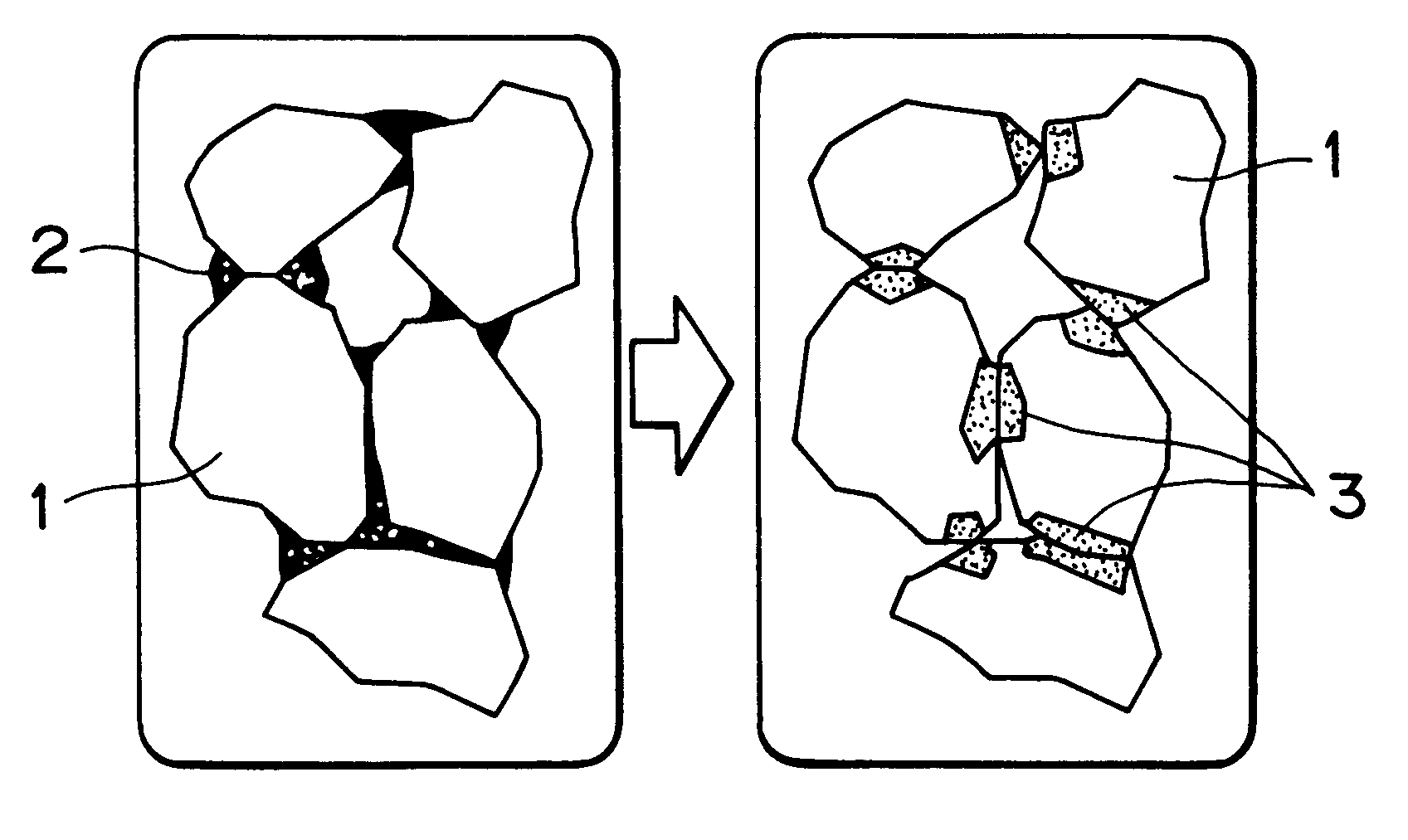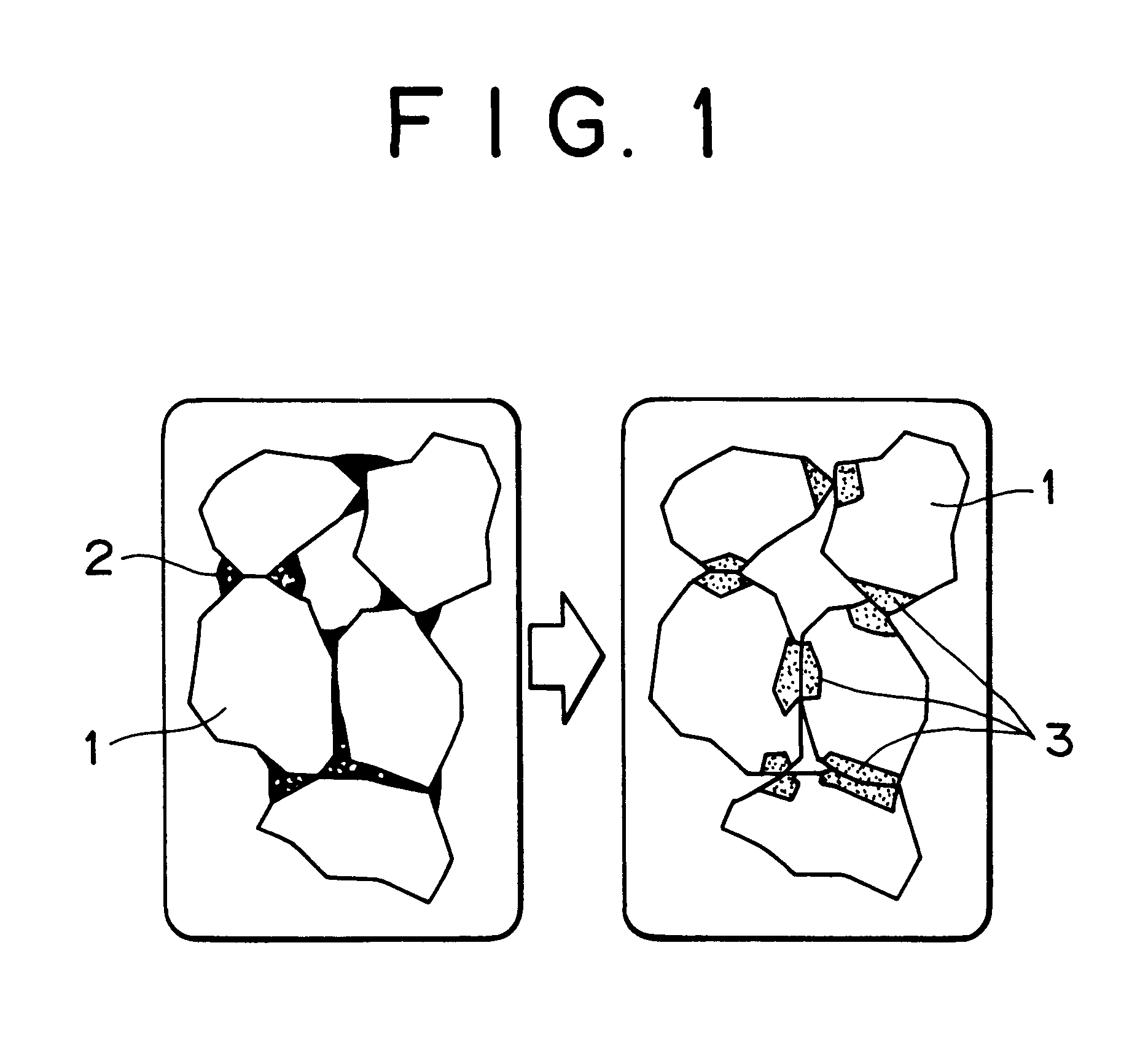Production of iron ore pellets
a technology of iron ore and pellets, which is applied in the direction of furnaces, crucible furnaces, furnace types, etc., can solve the problems of reduced bonding between particles, increased porosity of preheated pellets, and iron ore poses a problem, and achieves the effect of increasing the strength of preheated pellets
- Summary
- Abstract
- Description
- Claims
- Application Information
AI Technical Summary
Benefits of technology
Problems solved by technology
Method used
Image
Examples
example 2
In this example, experiments were carried out with iron ore, in which the ratio of iron ore with a high content of crystal water was varied, and sodium metasilicate as the additive, whose amount was varied, by using an actual travelling grate. The iron ores used in this example are shown in Table 1, and they were mixed in a certain ratio as shown in Table 2. The mixed iron ores were made into green pellets having a particle diameter of 9.5-11 mm and a porosity of about 28%.
Samples A and B of green pellets contain 7 mass % of iron ore with a high content of crystal water. (This amount is the maximum limit of high-water iron ore that can be mixed by the conventional technology). Samples C, D, and E of green pellets contain 20 mass % of iron ore with a high content of crystal water. Samples B and E of green pellets accords with the present invention.
Green pellets of each sample were placed in an iron basket, and the basket was buried in the pellet layer (300 mm thick) in an actual trav...
example 3
First, samples of green pellets were prepared from iron ore with a high content of crystal water and sodium silicate solution as the additive, both in varied amounts as shown in Table 4. (The sodium silicate solution was prepared by diluting thick water-glass with water.) Then, the green pellets were dried, dehydrated, and preheated by using an actual travelling grate. The production conditions of the green pellets and the operating conditions of the travelling grate are the same as those in Example 2.
The preheated pellets were recovered from the port (at the lower pellet layer) of the actual travelling grate, and they were tested for crushing strength.
It is apparent from Table 4 that all the samples of preheated pellets incorporated with sodium silicate according to the present invention are higher in crushing strength than preheated pellets in Comparative Example. It is also noted that if the amount of sodium silicate is the same (0.03 mass %), the increase in crushing strength of...
PUM
| Property | Measurement | Unit |
|---|---|---|
| Percent by mass | aaaaa | aaaaa |
| Percent by mass | aaaaa | aaaaa |
| Percent by mass | aaaaa | aaaaa |
Abstract
Description
Claims
Application Information
 Login to View More
Login to View More - R&D
- Intellectual Property
- Life Sciences
- Materials
- Tech Scout
- Unparalleled Data Quality
- Higher Quality Content
- 60% Fewer Hallucinations
Browse by: Latest US Patents, China's latest patents, Technical Efficacy Thesaurus, Application Domain, Technology Topic, Popular Technical Reports.
© 2025 PatSnap. All rights reserved.Legal|Privacy policy|Modern Slavery Act Transparency Statement|Sitemap|About US| Contact US: help@patsnap.com



